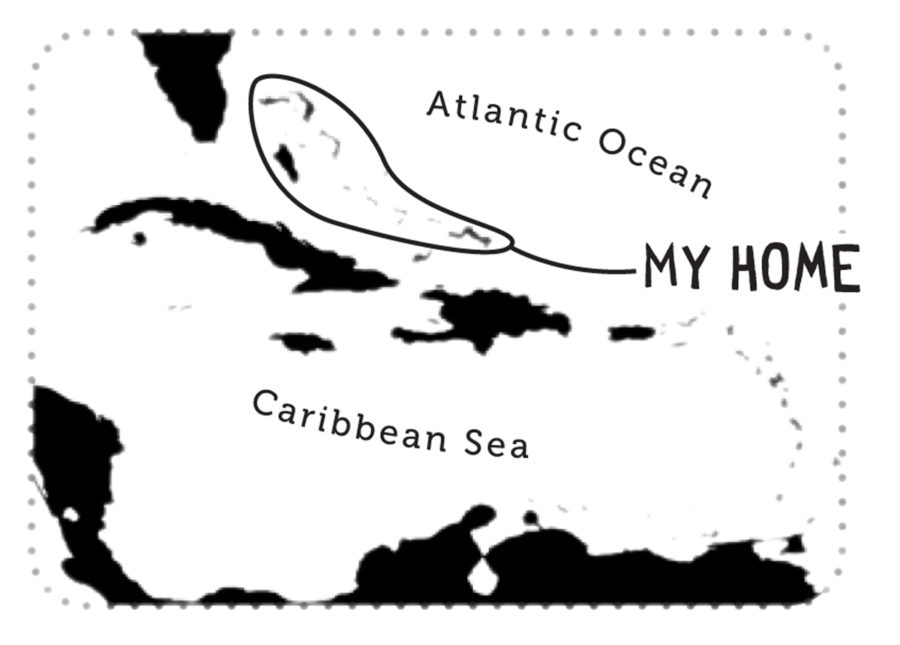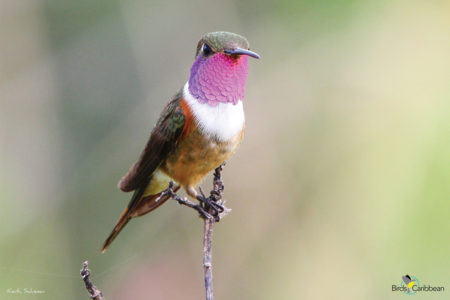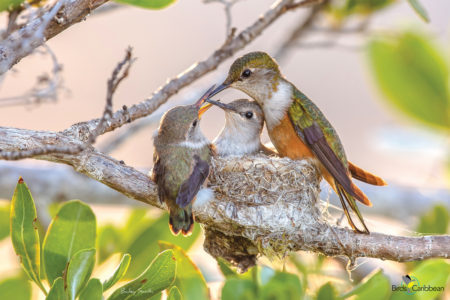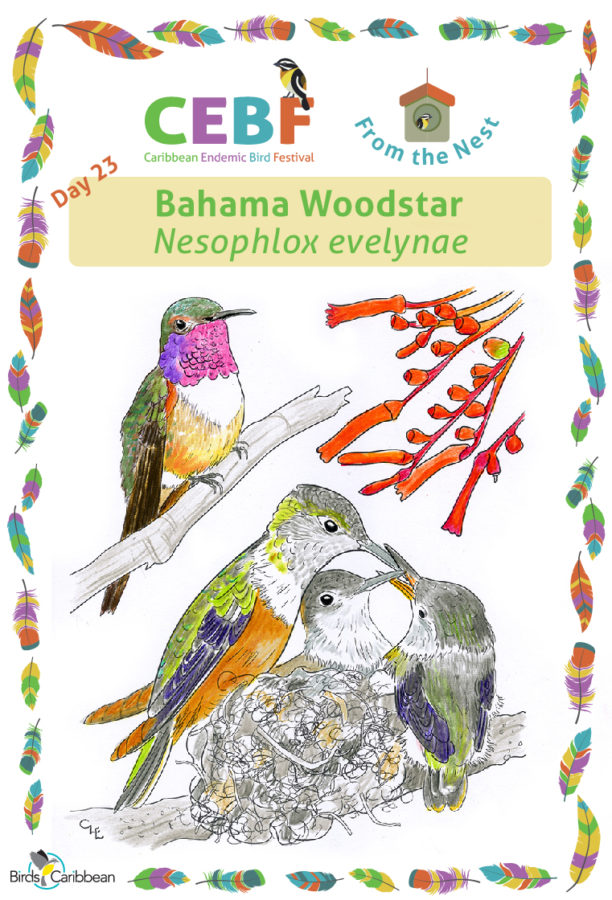Celebrate the Caribbean Endemic Bird Festival (CEBF) with us in our virtual “From the Nest” edition! Have fun learning about a new endemic bird every day. We have colouring pages, puzzles, activities, and more. Download for free and enjoy nature with your family at home.
Endemic Bird of the Day: Bahama Woodstar
 Resourceful, brave, energetic, full of life, beautiful – these are words that perfectly describe the little superstar… the Bahama Woodstar (Nesophlox evelynae). It is about 8-9.5 cm long. It is green above with males sporting a glittering purplish-pink gorget, white breast band, and a cinnamon-brown belly. It also has rufous and black tail feathers, black wings, and a long, thin, slightly curved beak. Females have a white throat and breast and rufous belly. When they fly you can see that males have forked tails and females have rounded tails. Although they are nectarivores (feed primarily on nectar), they will consume small insects to supplement their protein needs.
Resourceful, brave, energetic, full of life, beautiful – these are words that perfectly describe the little superstar… the Bahama Woodstar (Nesophlox evelynae). It is about 8-9.5 cm long. It is green above with males sporting a glittering purplish-pink gorget, white breast band, and a cinnamon-brown belly. It also has rufous and black tail feathers, black wings, and a long, thin, slightly curved beak. Females have a white throat and breast and rufous belly. When they fly you can see that males have forked tails and females have rounded tails. Although they are nectarivores (feed primarily on nectar), they will consume small insects to supplement their protein needs.
Like other species of hummingbirds, Bahama Woodstars are polygynous with males having multiple partners. During courtship, males engage in several courtship displays, one of which is a dive. During the dive, males make a metallic sound using their tail feathers. Bahama Woodstars build their nest using lichen, spider webs, cotton, and other plant fibers, and the papery bark from Gumelemi (Bursera simaruba). They lay two small white eggs. Females build the nest and raise the chicks. Males take no part in the rearing of offspring. Nesting has been observed year-round in this species. Despite their small size, Bahama Woodstars can be very aggressive and will defend their chicks as well as feeding territories from other birds.
The Bahama Woodstar is endemic to the Lucayan archipelago. It is a common resident on most islands in the Bahamas except for Great and Little Inagua islands, where it is replaced by the closely related Inagua Woodstar (N. Lyrura). It is also resident in the Turks and Caicos Islands. It occurs in all island habitats, including pine forests, gardens, and parks. Their call is a sharp tit, titit, tit, tit, titit, often speeding up into a rapid rattling sound. Their song is a dry rhythmic prititidee, prititidee, prititidee. Many native and cultivated plants depend on the Bahama Woodstar for pollination. Learn more about this species, including its range, photos, and calls here.
Colour in the Bahama Woodstar!
Download the page from Endemic Birds of the West Indies Colouring Book. Use the drawing above or photo below as your guide, or you can look up pictures of the bird online or in a bird field guide if you have one. Share your coloured-in page with us by posting it online and tagging us @BirdsCaribbean #CEBFfromthenest
Listen to the call of the Bahama Woodstar
The Bahama Woodstar’s call is a sharp tit, titit, tit, tit, titit often speeding to a quick rattle.
Puzzle of the Day
Click on the image below to do the puzzle. You can make the puzzle as easy or as hard as you like – for example, 6, 8, or 12 pieces for young children, all the way up to 1,024 pieces for those that are up for a challenge!


Activity of the Day
FOR KIDS & ADULTS: Scott Johnson, Bahamas National Trust Science Officer, captured this awesome video of a male Bahama Woodstar courting a female.

